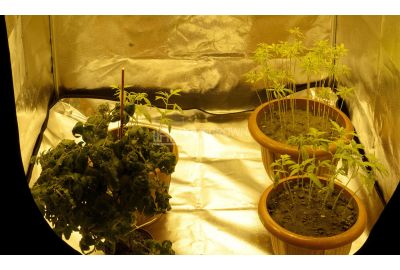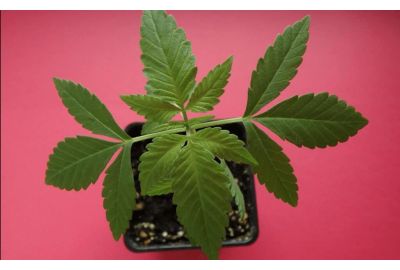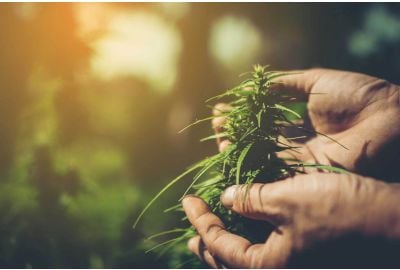The Ultimate Growing Organic Marijuana Guide
Growing organic marijuana can be daunting and confusing for newbie growers, but trust us, it's not as complicated as you might think.
Organic cannabis is healthier for you, your plants, your garden, and the Earth. It also produces higher yields with tastier and more potent buds.
Read on to see how to grow organic marijuana and all the tools and ingredients you'll need to make your growing operation greener.
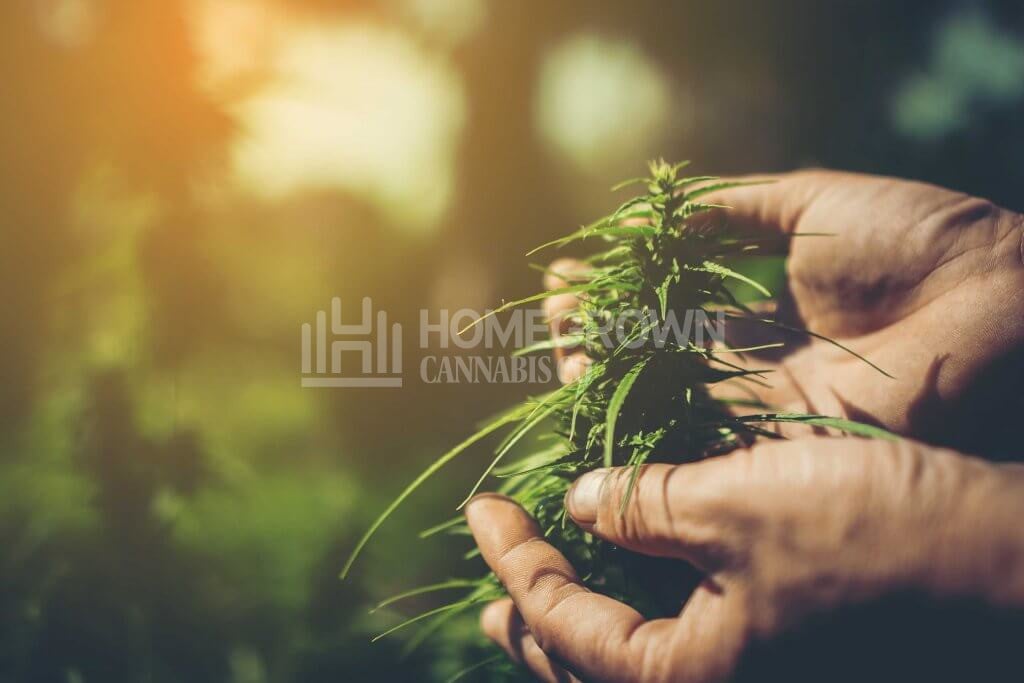
Organic cannabis growing: what does it mean?
Growing marijuana organically means cultivating the plant the way nature intended.
The weed industry has made breakthroughs in many artificial techniques and formulas, and with excellent outcomes.
However, we believe the top-quality buds and the healthiest cannabis plants surface when we return to our roots.
Today there’s a lot of confusion surrounding how to grow weed naturally.
Many cultivators believe marijuana is simply grown in soil that’s organic, but when chemical fertilizers and pesticides come into play, your plant is no longer organically grown.
To be completely organic, you should only use the best natural fertilizers and pesticides that are natural in origin and haven’t seen the inside of a lab.
Go natural and grow your organic marijuana using plant nutrients composted from bushes, dead leaves, grass clippings, guano, fish, or seaweed.
Growing organic weed not only results in exceptional yields but benefits our garden, the environment, and the consumers.
All over the world, native marijuana strains flourish in the wild, which shows that high-quality earth and nature’s biodiversity are all your cannabis seeds need to thrive.
If cannabis can grow organically in the wild, what's stopping you from doing so in your garden as well?
Keep reading as we delve into the benefits, challenges, and how to grow organic cannabis indoors and outdoors.
5 benefits of growing organic marijuana
Growing organic marijuana holds many benefits you might not know about yet.
This natural cultivating method is superb for the environment and increases yield and potency, improves the flavors, and enriches the soil microbiome.
What else would you want as a cannabis cultivator?
1. Less environmental impact
The most environmentally friendly way to cultivate cannabis is outdoors in natural sunlight.
The most significant adverse environmental impact of marijuana growing is the electricity consumption when grown indoors.
Harmful chemical fertilizers and pesticides leak into our water supplies, produce fossil fuels, and use substantial energy when manufactured.
Unfortunately, not every cannabis gardener can grow outside.
Cultivators who take on growing organic cannabis indoors also help minimize the negative impact on water supplies and reduce fossil fuel emissions in areas where the cultivation of marijuana is commercial.
You can do your bit for the planet and use organic nutrients and fertilizers.
Natural pest control methods are also often good for the environment, such as introducing predatory insects into your garden. Using ladybugs proves how to get rid of thrips naturally instead of using chemical pesticides on your plants.
Other predatory insects include:
- Parasitic wasps
- Pirate bugs
- Praying mantis
- Predator mites
- Assassin bugs
- Lacewings
2. Enhanced yields
Commercial cultivators often assume that growing marijuana organically reduces their yields. This is not necessarily the case; when you meet all your plant’s requirements, and their surrounding conditions are optimum, the organic way could reach higher yields than conventional methods.
Inorganic growing is a thing of the past; with an increase over the years of commercially available organic fertilizers, growing mediums, and supplements, organic is the way to go.
You can also easily make your organic potting soil and develop the exact mixture for your chosen strain, using worm discards, blood and bone meal, guano, and others.
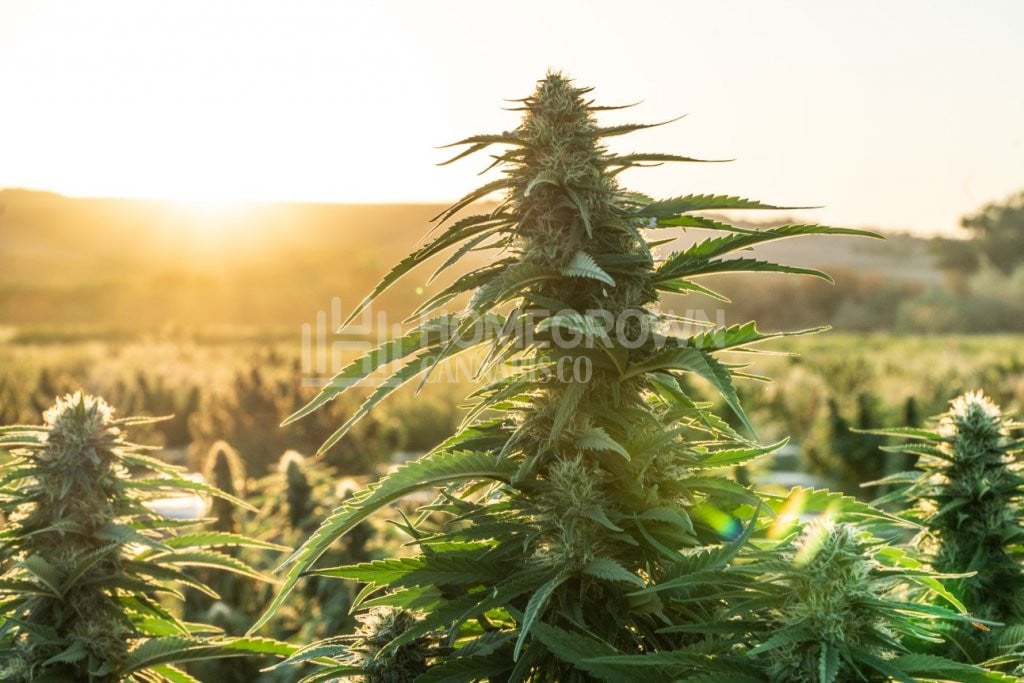
3. Strengthened potency
Strengthened potency? Done deal! Providing your cannabis plants with precisely what they require, down to the very last microbe in their soil, is an essential part of growing organic marijuana.
Matching these requirements can be very rewarding and allows your marijuana plants to achieve their full potential and potency.
Conventional nutrient systems are relatively simple in their make-up, containing only the basic nutrient requirements for cannabis to survive and grow.
By growing your plant the natural way, all their needs are easily matched.
4. Improved flavors
Organic cannabis growing is widely considered as more flavorsome compared to conventionally grown marijuana in the weed cultivating community.
Enhancing the micro-environment produces robust, healthy cannabis plants with higher levels of flavonoids, terpenoids, and cannabinoids.
Terpenes and terpenoids are the fragrant compounds found in weed buds. Marijuana has dozens of them. They are responsible for giving each strain its specific aromas.
As you might assume, the more terpenes and terpenoids, the more aromatic and flavorful your final product will be.
Organic cannabis growing avoids synthetic pesticides and insecticides, and by not using these artificial additives, your overall taste and aroma are better.
5. Rich microbiome
Another benefit of growing marijuana organically, which is the root reason for improved yields, flavor, and potency, is your soil microbiome’s richness.
The microbiome is the community of microbes found in a particular environment.
Organically made soil is a tiny ecosystem within itself, made up of ample amounts of fungi, bacteria, and other microscopic organisms such as nematode worms.
Unfortunately, the sterile environment found within many lab-produced growing mediums cannot support this level of intricacy.
Having a rich soil microbiome has multiple benefits, from enabling nitrogen-fixing, disease prevention, water retention, and growth stimulation.
3 challenges of growing marijuana organically
Simply growing marijuana already has its challenges. Providing your plant with the correct amount of light, nutrients, water, and temperature requires practice as well as patience.
When it comes to growing organic marijuana, here are three challenges you might face and solutions to put you at ease:
1. Overwatering
Over-watering your cannabis plants is a common detrimental challenge faced by those growing marijuana organically. It prevents plants from conducting normal processes and creates wastage—the top thing organic growers should avoid.
As a rule of thumb, you need to water your plant when the top 5cm of the soil feels dry to touch. Usually, they need watering every 3–4 days. If you live in a dry or hot area, you may have to water more often.
2. pH levels
Organic cultivators rarely need to pay too much attention to pH, but challenges can still arise.
Cannabis flourishes in slightly acidic soil with a pH of between 6–7. If the soil is too alkaline or acidic, your plants struggle to uptake nutrients, leading to nutrient deficiency.
Cultivators can test their soil’s pH using a simple pH tester.
The usual technique of tackling cannabis pH challenges is synthetic chemical pH “up” and “down” products. However, there are also natural ways to restore soil pH balance:
When the soil is too acidic, simply add:
• Baking soda
Too alkaline? Add:
• Lemon
• Vinegar
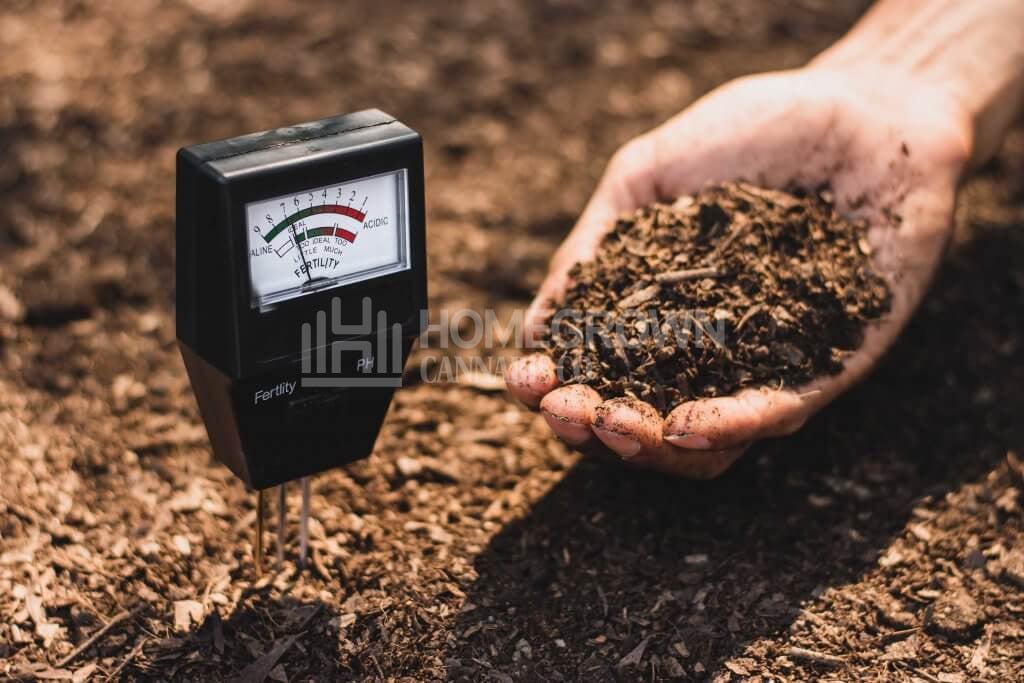
3. The right amount of nutrients
While avoiding the use of chemical fertilizers, growing organic marijuana still requires the use of the primary macronutrients—nitrogen (N), phosphorus (P), and potassium (K)—and several other microminerals to grow, survive, and thrive.
In the beginning, it's challenging to know how to provide your plant with the right amount of nutrients; the solution is as simple as two words: super soil!
This genius creation by Subcool uses organic materials to create a fertilizer that's so nutrient-rich it could support marijuana plants throughout the growing cycle.
Do your research and make your super soil at home or buy it at a store. Time to get excited to witness your cannabis plants flourish the organic way.
What do you need to grow organic weed?
Here's a simple rundown of what you need to grow organic weed and to help you start your natural growing journey today!
Growing organic cannabis indoors
When growing indoors, you need to minimize the waste you create and the chemicals you use to make up for the grow lights. Here's what you need to start growing organic cannabis indoors:
- Autoflowers or fast version feminized cannabis seeds: these flower automatically and speed up the growing time. Growing with these seeds helps minimize waste created and resources used such as nutrients, light, and water.
- Full-spectrum LED lights: LED lights are far more eco-friendly and energy-efficient than regular lights—they significantly reduce power usage. They’re also made up of over 95% recyclable materials and don’t emit harmful chemicals.
- Super-soil: Whether you made it yourself or bought it from a store, reducing chemical fertilizer usage is what organic cannabis growing is all about.
- Train your plant: cannabis training methods increase the quality and quantity of the yields. They use the available light energy more efficiently to reduce the energy requirements of your plant. We recommend trying the low-stress training (LST), the Sea of Green (SOG), and the Screen of Green (SCROG) methods.
Growing organic cannabis outdoors
There’s no question about it. Growing organic marijuana outside is the most natural approach since no grow lights are needed.
Use the correct seeds for your climate and terrain; it'll increase your success rate, and your plant will develop to its fullest potential.
Autoflowers or fast version feminized cannabis seeds are grown in organic super soil, which will also boost your success rate and significantly reduce your growing carbon footprint.
4 steps to help you grow organic marijuana
These are all the things you should keep in mind when growing organic weed:
1. Use nutritious organic fertilizer
Provide your plant with all its nutrient needs by making your own organic fertilizer or buy a commercial organic blend.
Natural fertilizer is teeming with organic matter to help vitalize the soil microbes. They contain the following ingredients at varying ratios:
- Bone meal
- Mycorrhizal inoculants
- Worm castings
- Biochar
- Epsom salt
- Compost
- Alfalfa meal
- Gypsum
- Garden lime
- Blood meal
- Humic acid and fulvic acid
- Bat guano
- Crustacean meal
- Kelp meal
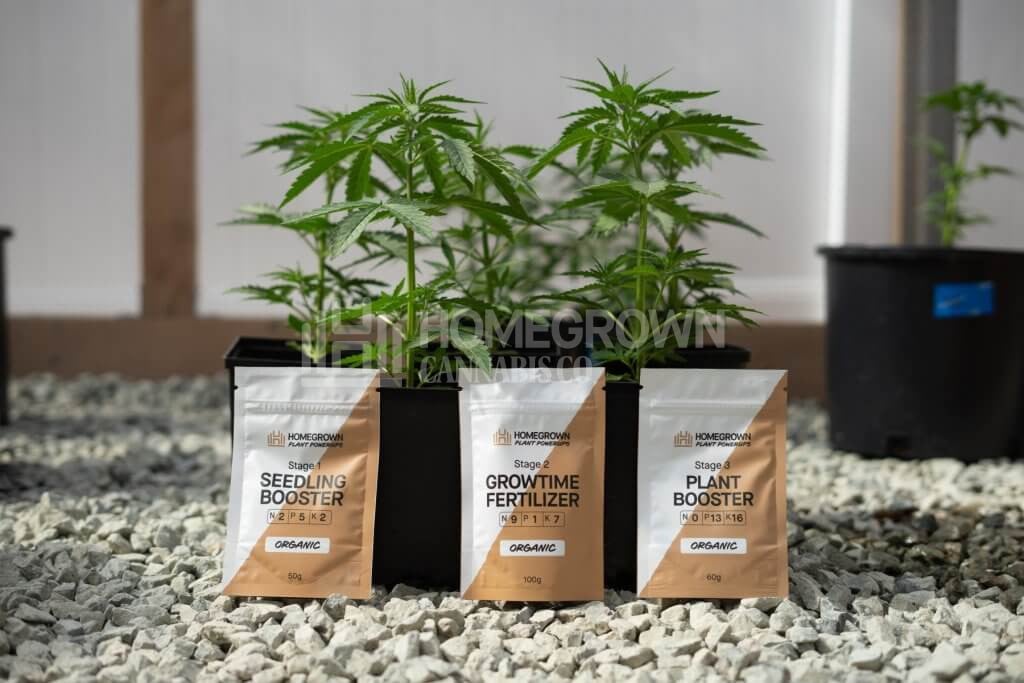
2. Add compost to your plant
Compost—nicknamed ‘black gold’—refers to decomposed organic matter. It contains vital nutrients and minerals, including the three main macronutrients your cannabis plant requires.
Buy commercial compost or make it at home by building a mound of organic material and allowing it to decompose.
Your heap should have a blend of “green” and “brown” materials, which you can easily find in your kitchen or garden, such as:
- Shredded paper
- Coffee grounds
- Kitchen wastes
- Dry leaves
- Cardboard
- Food scraps
- Wood chips
- Teabags
- Fruits and vegetables
- Grass trimmings
- Straw and hay
To use compost, scatter it liberally over the soil or mix it into the potting soil.
3. Mulch the soil bed
Mulching is the action of spreading organic matter on top of the soil bed.
The mulch preserves moisture and keeps the plant cool, reducing the watering frequency, all while suppressing weeds. Once decomposed, it also adds to the overall nutrient content of the soil.
Here are the most commonly used types of organic mulch you can use to help you grow organic marijuana:
- Compost
- Pine needles
- Shredded or chipped bark
- Composted manure
- Straw
- Leaves
- Grass clippings
4. Find companion plants
Cultivating plants that grow cooperatively in the same area offers many benefits, such as repulsing pests and attracting natural predatory insects.
For natural, reliable pest control, grow your organic weed alongside these plants:
- Basil
- Marigold
- Chervil
- Foxglove
- Chili peppers
- Lemon balm
- Chrysanthemum
- Lavender
- Coriander
- Garlic
- Dill
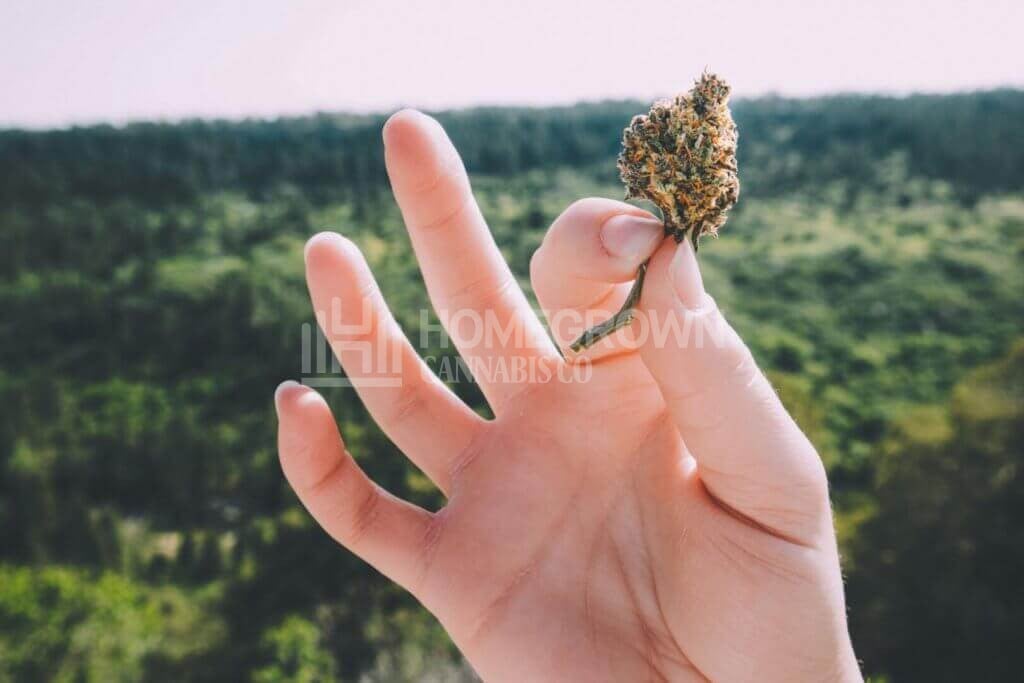
Save the earth and start growing organic marijuana
Go back to weed’s growing roots and start cultivating your cannabis seeds the organic way.
It might take a little practice, but soon you’ll be successfully growing organic marijuana and saving the earth at the same time.
What are you waiting for? Grab your seeds from Homegrown Cannabis Co. today and start your organic adventure.
About the author: Derek LaRose
Also known as Kronic from The Cannabis Kronicles, Derek LaRose is a young ambitious cultivator and a staple educator for indoor cultivation.

